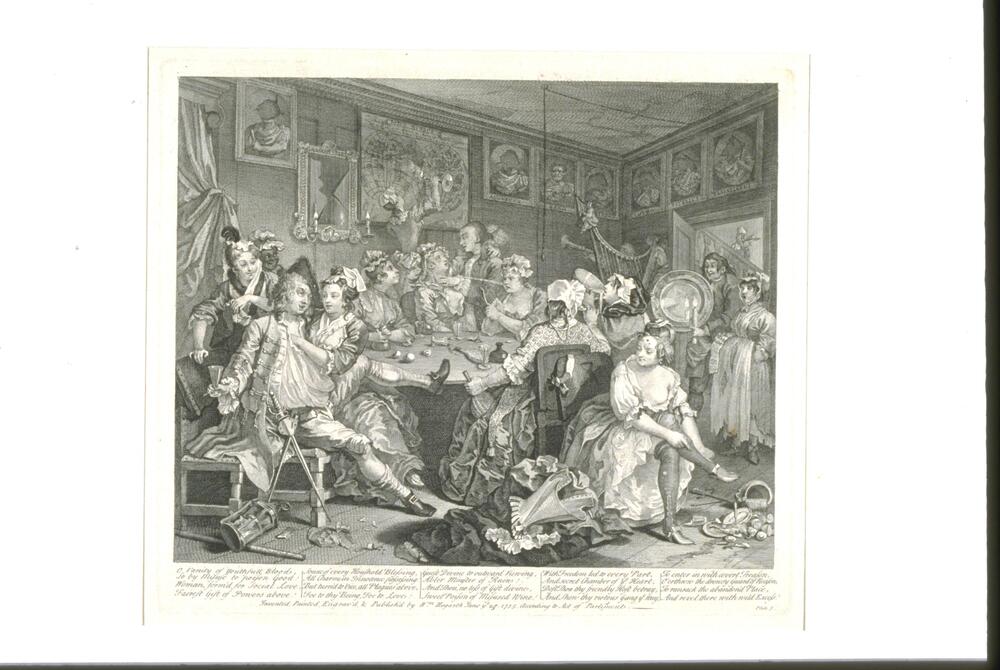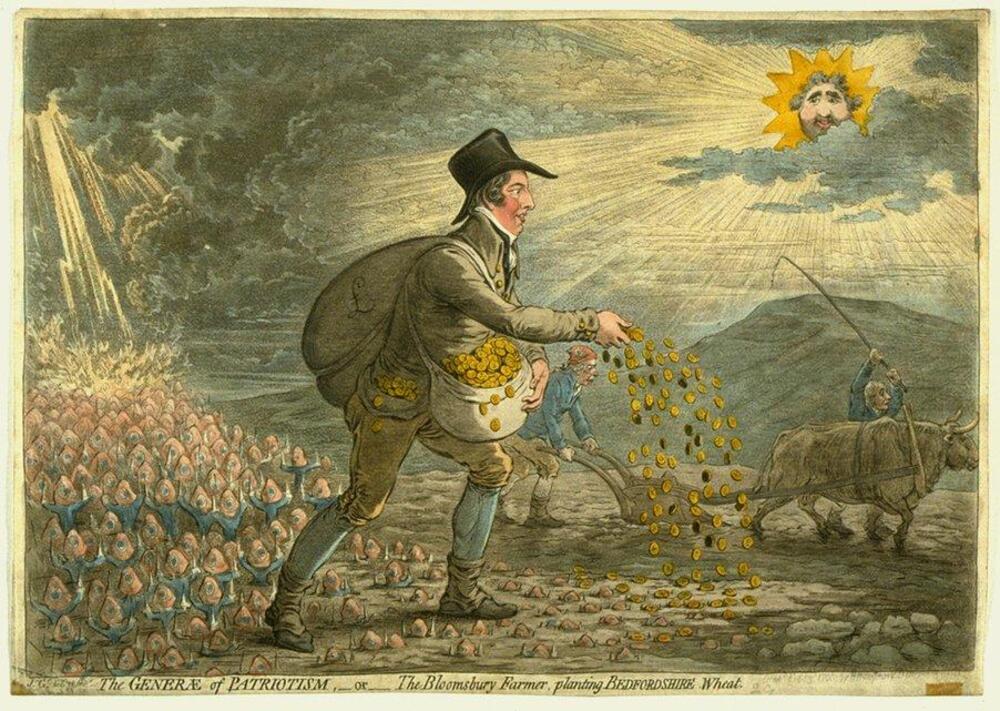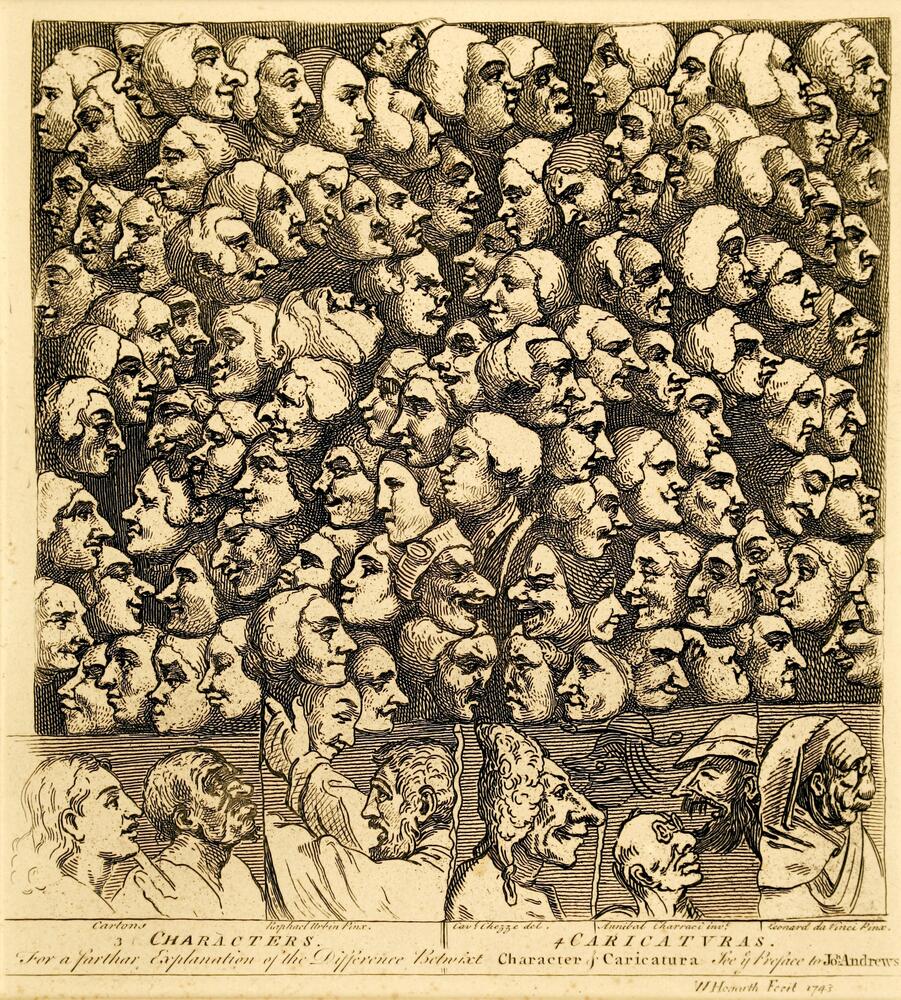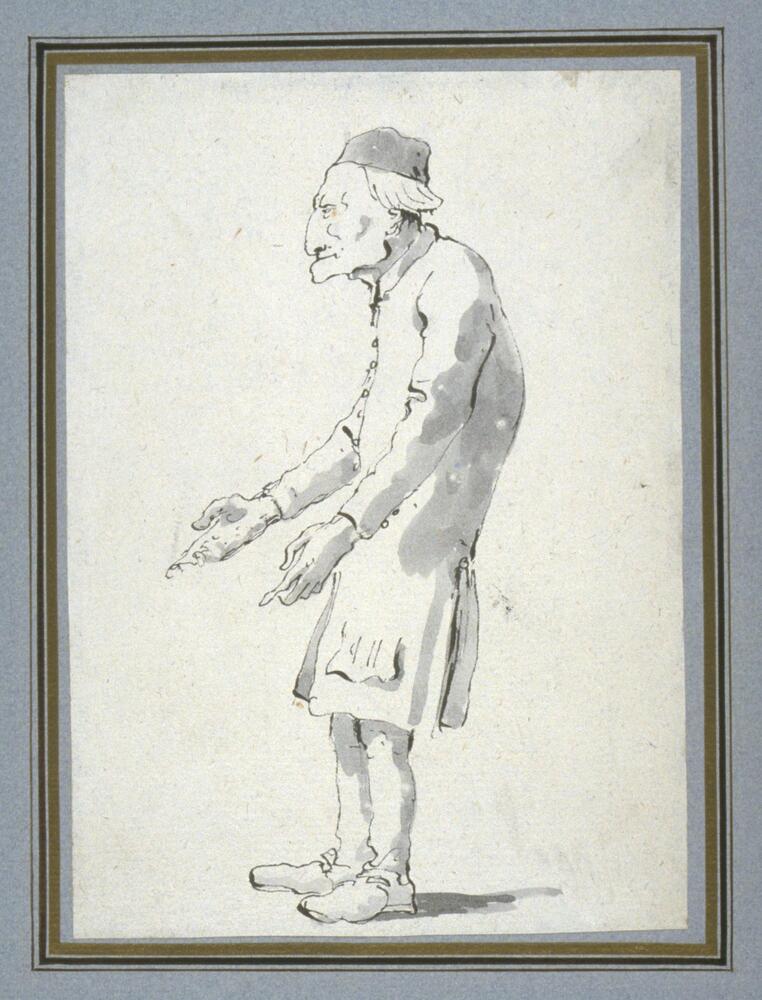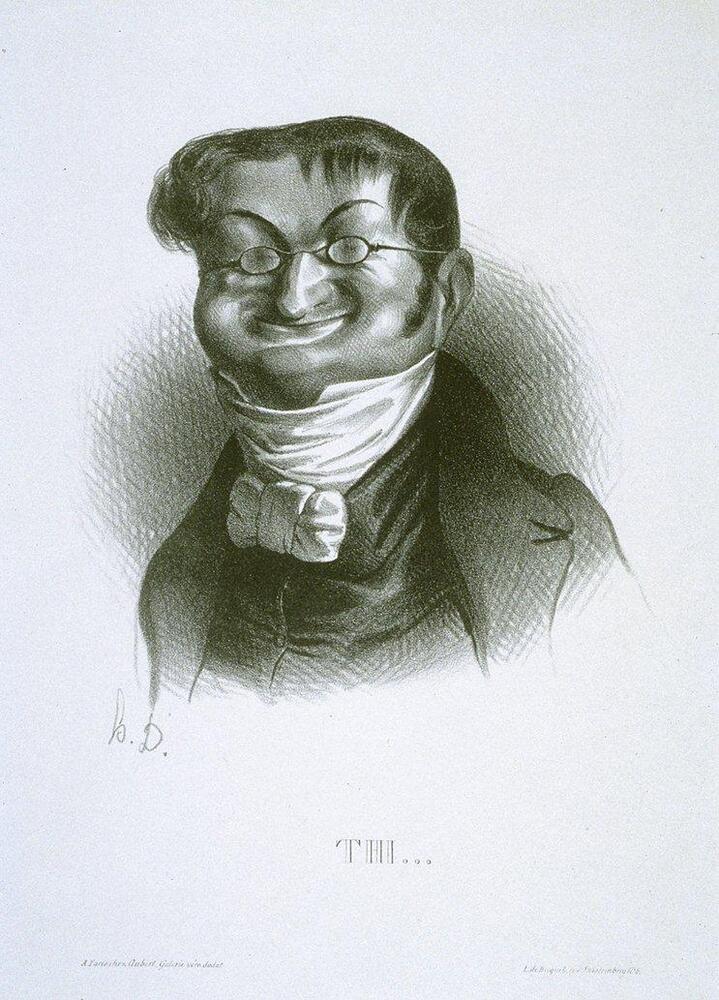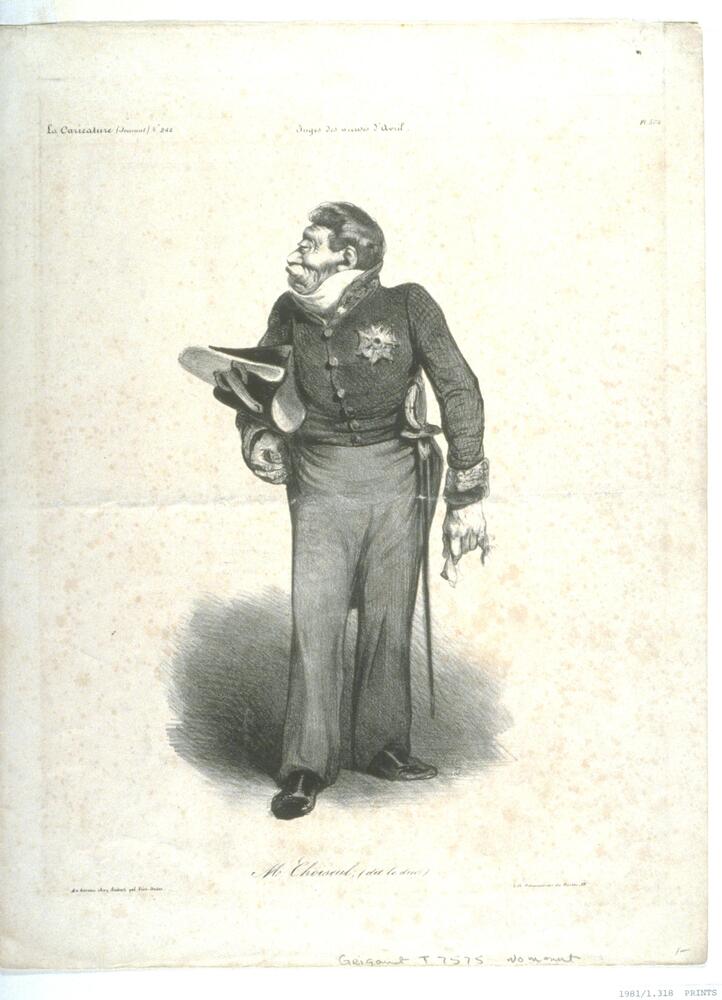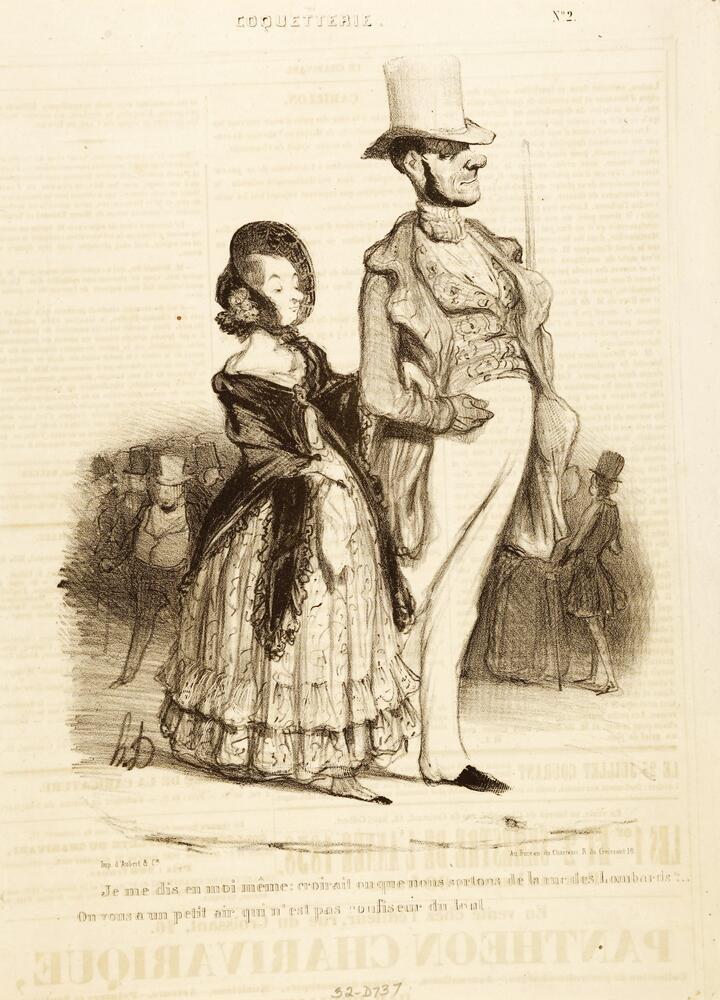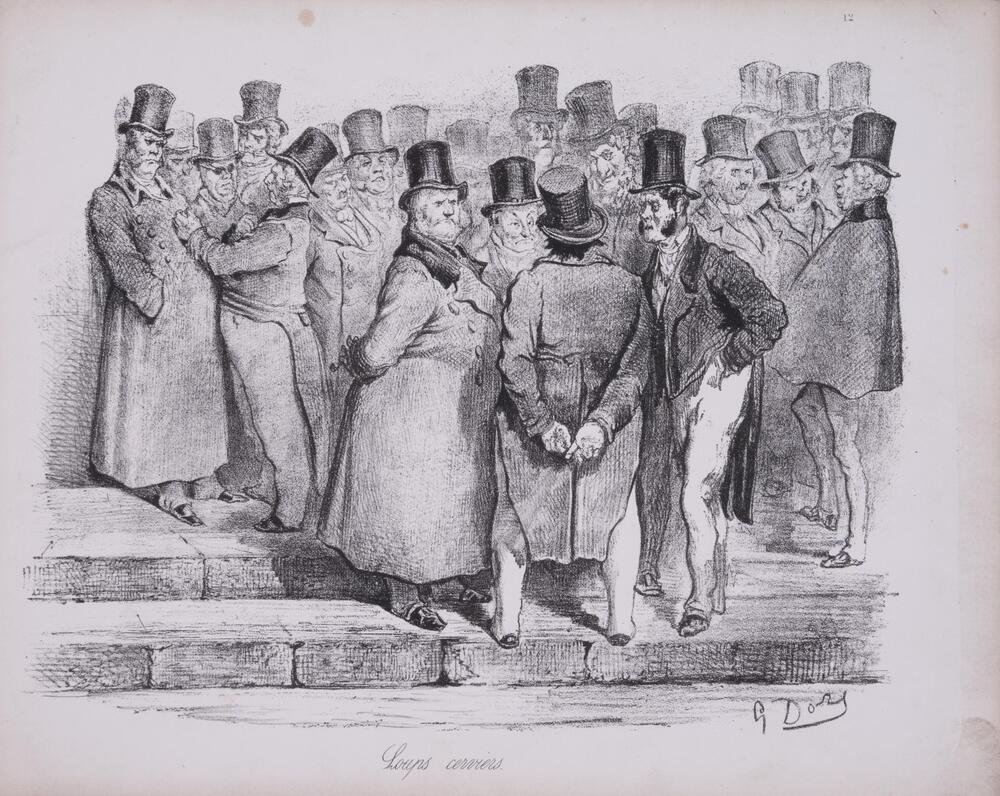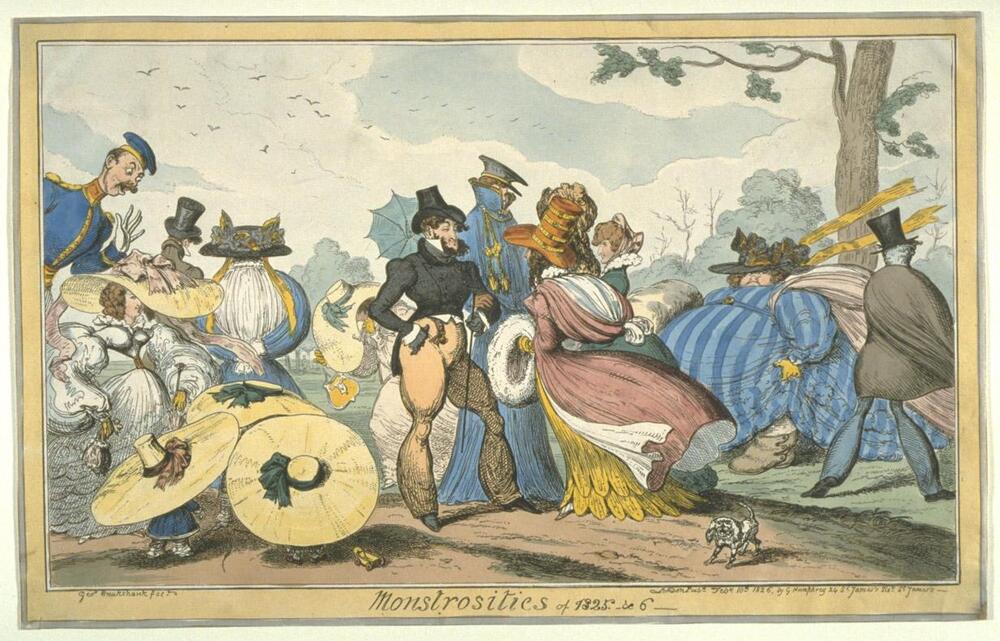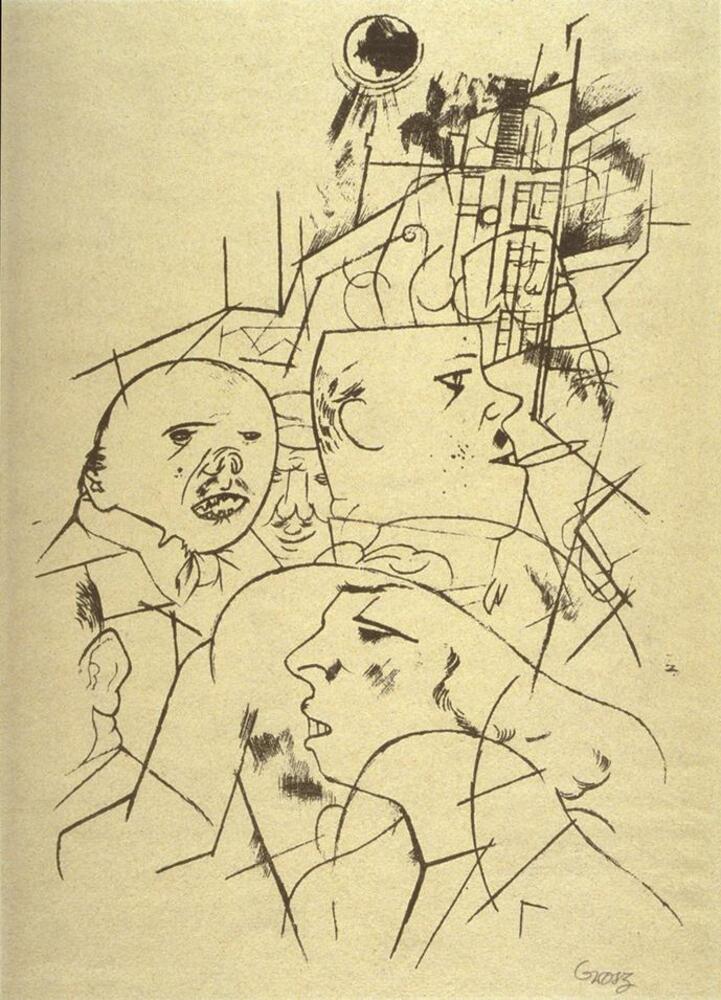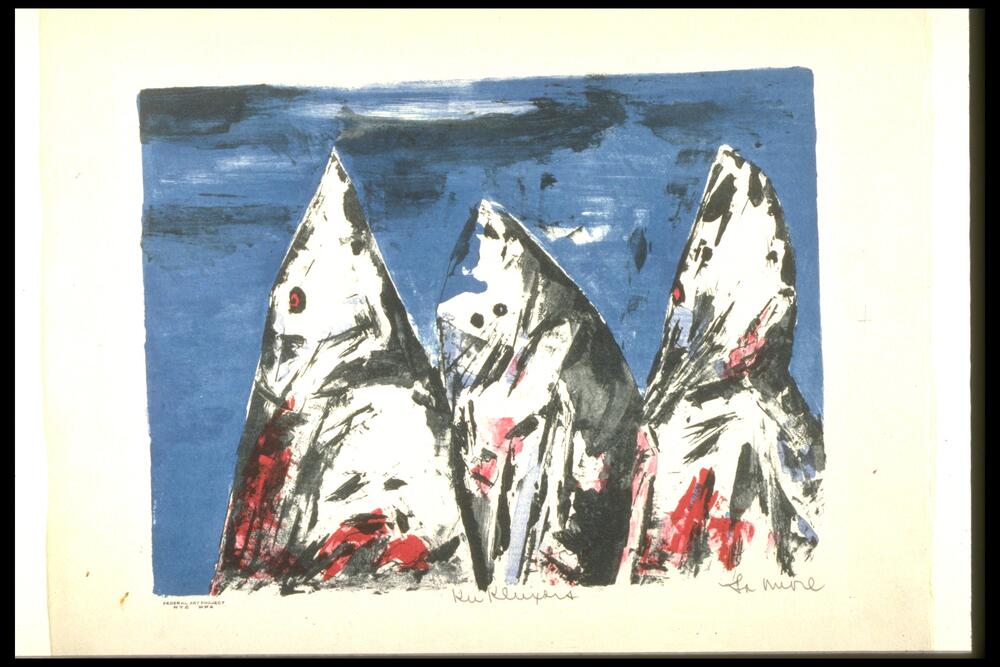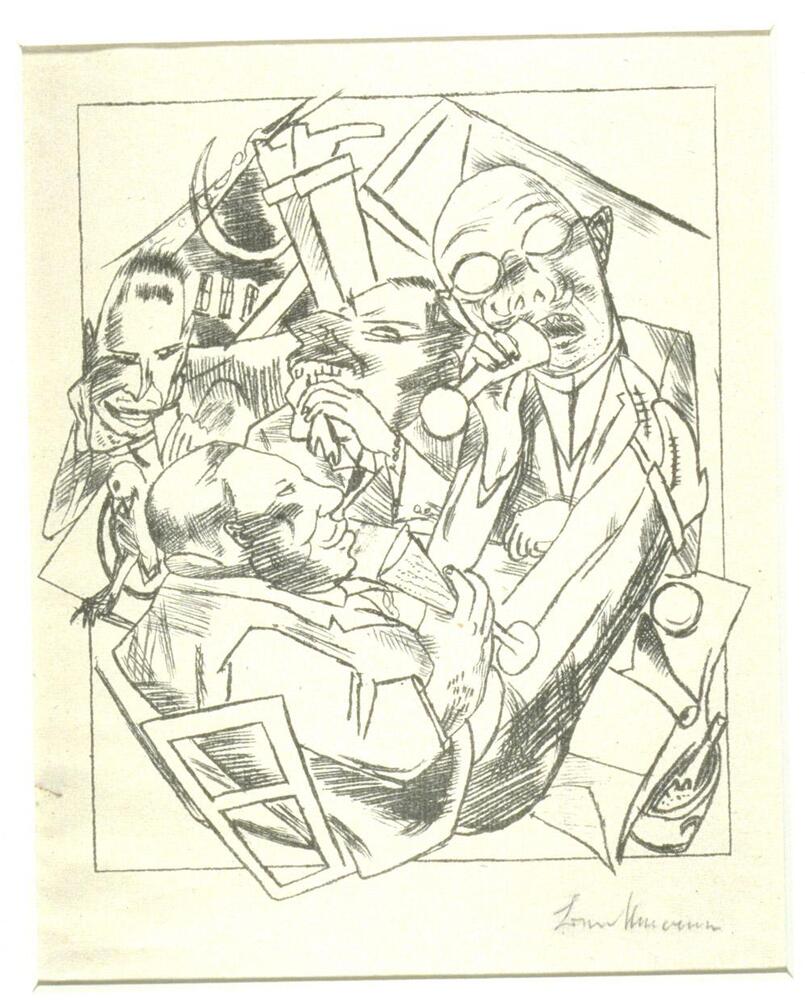Rude Characters: The Art of European Caricature
Selections from the UMMA Collection
Humorous imagery dates back to the earliest beginnings of picture making, but
the art of caricature is a far more recent development, with a history all its
own. From the Italian word caricare, meaning “to load,” it originally referred
to exaggerated portraits of individuals, focused upon defining characteristics
(the nose, a prominent chin) that could be visually altered for satirical
effect. Over time the practice expanded, evolving from a private art form
performed within aristocratic circles into a generic mode of visual expression
directed toward a popular audience.
This
exhibition charts the development of European caricature through a focus on
exemplary artists within the tradition, such as William Hogarth, James Gillray,
Francisco Goya, Honoré Daumier, and George Grosz. Comparing individual works by
these artists enables us to identify some common visual elements through its
history. Giovanni Battista Tiepolo's sketch of a man with elongated arms
reflects the 'classic' definition of caricature, as does Daumier's exaggerated
portrait of Adolphe Thiers. A looser conception of the term is visible
meanwhile in examples by George Cruikshank and Grosz, who use stereotypical
characters to ridicule contemporary customs and social hierarchies.
Both
tendencies evolved in tandem, as artists responded to technological
advancements and the enlargement of audiences over time. Whereas in
sixteenth-century Italy satirical depictions of known personalities tended to
circulate among friends as drawings, by the eighteenth century caricature
reached a broad public as printed images disseminated through publishers and
booksellers. In the nineteenth century, greater demand for illustrations that
spoke to current political events and an ever-changing social environment
further fueled the production of caricature, and satirical imagery quickly
became an aspect of everyday visual culture, found in newspapers, magazines,
and advertisements. Most twentieth-century caricaturists followed earlier
precedents; others instead sought to 'weaponize' graphic satire by aligning it
with political parties or social movements, as had occurred during early
periods of revolutionary turmoil. That caricature can appear both humorous and
hostile, or be recognized as both art and propaganda, is due to this legacy.
Attending to its evolution can thereby help us to grapple with the enduring
potency of the art of caricature.
The Eighteenth Century: From Private Drawings to Public Prints
From its
origins in Italy, caricature spread along tourist routes popularized by
traveling aristocrats and artists during the seventeenth century. By the
beginning of the eighteenth century it had become a public art form, thanks to
a growing market for satirical engravings and etchings. Sold as single prints,
caricaturists designed images tailored for immediate effect. The individuals or
scenes depicted had to be entertaining as well as relatable, otherwise the
message or allegorical meanings would be lost to contemporary viewers. The
works of William Hogarth and James Gillray, representative of the "golden
age of English caricature," demonstrate how the art was used for social
and political ends.
Hogarth's series A Rake's Progress tells the story of Tom Rakewell, the profligate son of a rich merchant whose exploits in London eventually land him in prison. In plate three of the story we find him at left in the image, half-undressed and luxuriating in a brothel. We are meant to read the scene as evidence of Rakewell's immoral and wasteful conduct, a step toward his eventual demise.
Gillray's portrait of Francis Russell, 5th Duke of Bedford in The Generae of Patriotism is an altogether different image, aimed at political commentary rather than moral instruction. Working on behalf of conservative patrons, Gillray targets Russell's association with members of the liberal Whig party and their support for "French" republican values. Charles James Fox, leader of the party, appears as the sun, whose rays engender from the wealth sowed by Russell an army of supporters wearing the symbolic bonnet rouge of the French revolution and armed with daggers.
| |
|
|
|
The Nineteenth Century: The Rise of Serial Publications
The rapid
growth of illustrated newspapers and journals during the nineteenth century
expanded the range and frequency of caricature, aided by new printing methods
and press technology. Caricaturists soon became regular contributors to
publications tasked with influencing public opinion, and at times found
themselves the victim of governmental censorship or retaliation. Ironically
this would usually serve to increase familiarity with outlawed images and
cement the reputation of the artist in question, as was true of Honoré Daumier,
the leading European caricaturist of the period.
Celebrated today for their superior artistry, Daumier's drawings were seen by contemporary Parisian audiences as rebellious, even subversive. An 1831 lampoon of the French king Louis Phillippe resulted in a six-month prison term. Subsequent works alternated between social satire focused on customs and characters indicative of nineteenth-century France and politically charged images attuned to current events and changes of government. Coqutterie, part of a series under this title, is an example of social satire, mocking bourgeois ostentation; Daumier's portrait of Adolphe Theirs, Thi..., of political satire, here presenting the respected interior minister of France (and future president) in exaggerated and unbecoming form.
Political images also appeared in a more
allegorical guise, such as The Conference of London, which comments on
diplomatic wrangling over borders and the status of Poland following an
insurrection there in 1830. Depicting the various European powers involved as
animals--England as a fox, Russia a bear, Prussia a horse, Austria a monkey,
France a hare--Daumier casts the conference in a sardonic light while slyly
criticizing Louis Phillipe once again, whose rotund figure stands in for the
body of the hare.
|
|
|
|
|
|
The Twentieth Century: Publicity and Propaganda
Caricaturists
faced new challenges at the beginning of the twentieth century as photography
increased its prominence within European visual culture. Nevertheless, they
maintained a position within the popular press and found other avenues for
publication in advertising and politics. During the period between the world
wars, artists belonging to the radical left and right utilized caricature for
ideological purposes. Anti-Semitic and racist caricatures were published by
German nationalist organizations and their supporters abroad to demonize
perceived "enemies of the people." Revolutionary socialists likewise
employed caricature in their battle against the ruling class of
"capitalist exploiters."
George Grosz, drawing upon historical precedents, perfected a direct and acerbic style of caricature in the 1920s, combining the moral indignation of Hogarth with the political acuity of Daumier. He briefly put this style to use on behalf of the German Communist Party during these years, executing images that attacked the inequities and reactionary beliefs he encountered. His portrait of a German police officer in Religion of the Sword renders this figure of authority a monstrous goon, while condemning support for militarism among the "respectable classes" who bow down before him. Ants, on the other hand, displays a downtrodden group of working class types in an effort to reveal modern conditions of exploitation.
European
developments influenced caricaturists internationally, as can be seen in
examples from the United States like that of the renowned cartoonist William
Gropper. Long a contributor to left-wing magazines, in The Speaker Gropper
depicts members of the US House of Representatives during the Watergate
hearings, one of a series he produced on these events.
|
|
|
|
|
|
Further Resources:
Collection of Daumier Lithographs
Created For
K-12 EducatorK-12 Student
Museum Visitor
UMMA Docent
UMMA Staff
University Faculty
University Student
Rate this Resource
AVG: 0 | Ratings: 0
& Author Notes
Creative Commons by-nc-saLast Updated
December 19, 2017 12:01 p.m.Report
Reporting Policy
